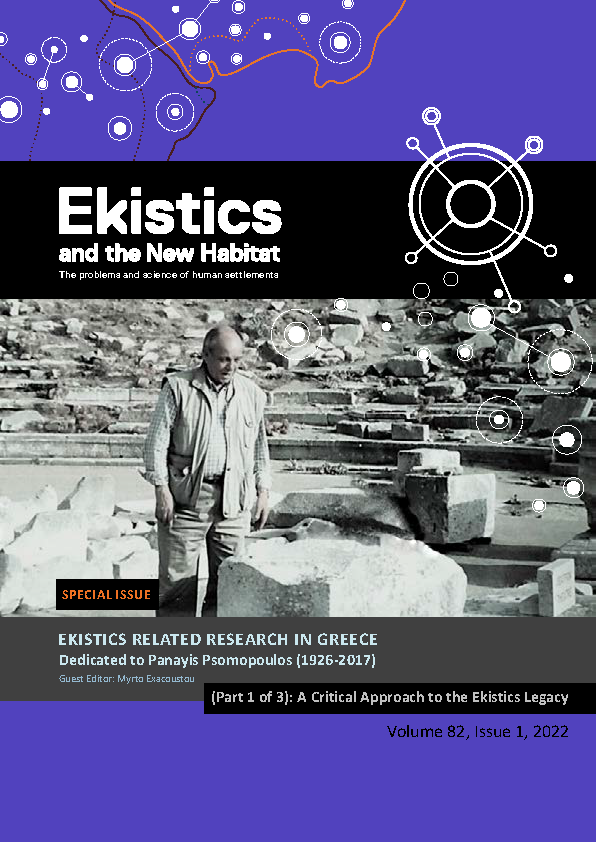Jaqueline Tyrwhitt’s Contribution: From the 7th C.I.A.M. Grid to the Ekistics Grid
DOI:
https://doi.org/10.53910/26531313-E2022821651Keywords:
urban planning, 7th C.I.A.M., Organicism, urban gridAbstract
In this essay we are discussing a turning point in the urban thinking of the 20th century related to the transition from a static view of the city to a view of the city as an evolving living organism. We are exploring the paradigm shift from the urban grid of the 7th C.I.A.M. to the urban grid of the last phase of the science of Ekistics (C. A. Doxiadis) by focusing on the contribution of Jaqueline Tyrwhitt. First, we analyze the urban grid as a result of the considerations of the post war functionalist urbanism of the 7th C.I.A.M. Then we present the basic characteristics of the science of the human settlements called Ekistics and analyze its grid accordingly. Comparing the two grids, we highlight the introduction of the concepts of ‘change’ and ‘system’ as distinctive of the above-mentioned paradigm shift. Third, we explain Jaqueline Tyrwhitt’s contribution in this paradigm shift. Finally, we explain how Tyrwhitt formulated her own humanistic and ecological conception of urban planning having been influenced by the biologist and urban planner Patrick Geddes and his conception of the city as a living organism, which was part of the wider interaction between concepts in biology and the social sciences.
Published
How to Cite
Issue
Section
Categories
License
Copyright (c) 2023 Ekistics and The New Habitat

This work is licensed under a Creative Commons Attribution-NonCommercial-NoDerivatives 4.0 International License.
Please contact the Editor-in-Chief: editor@ekisticsjournal.org, should you have any questions on copyright for your submission.
This research journal is for Educational and Knowledge development purposes.
All material published on this site complies with our copyright and terms as described by the Attribution-NonCommercial-NoDerivaties 4.0 International (CC BY-NC-ND 4.0)






